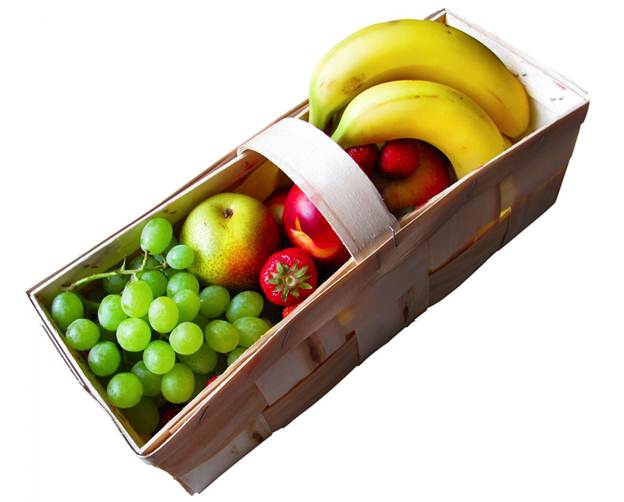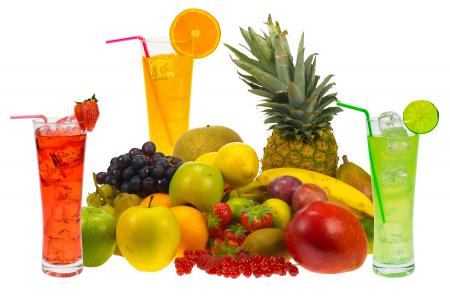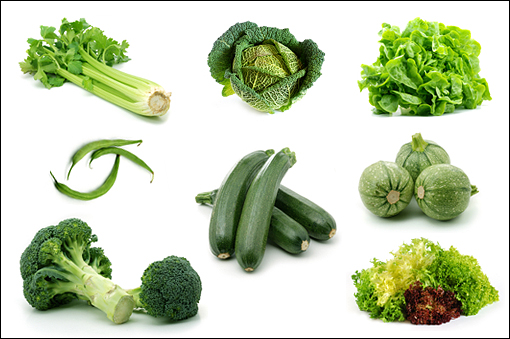We investigate what it is, where it came
from and why we need it…
Of all the modern health mantras (drink
eight glasses of water a day, eat oily fish three times a week, cut down on
alcohol, eat more fibre), getting your five-a-day is the one that has really
stuck. Ask anyone even vaguely interested in their health how many portions of
fruit and vegetables you’re supposed to eat, and they’ll inevitably trot out
the well-worn ‘five-a-day’. But, why do we need five portions a day and how can
we get it?

Where did it come from?
Remembering the slogan is all very well,
but how many of us actually know what it means? It’s a bit like the recommended
21 units a week of alcohol. Few of us know, (or, really want to know!) what a
unit of alcohol really is.
The idea behind the five-a-day campaign was
to try to improve our general health by boosting the amount of fruit and veg we
eat. It’s based on advice from The World Health Organization (WHO), which
states we should eat around 400g of vegetables and fruit a day.
What are the benefits?
Fruit and veg are packed with vitamins and
minerals, including folate, vitamin C and potassium, and are high in
antioxidants, thought to protect us against some cancers, heart disease and
strokes. They are also high in fibre, which promotes a healthy gut, improves
digestion and reduces the risk of bowel cancer. They are also low-calorie
density (LCD) foods, so you can eat a lot of them (particularly veggies)
without putting on weight, which is important for a healthy diet.
Why is it controversial?
The recommend five is undoubtedly a good
vehicle for encouraging you to take on more nutrients through your diet, which
has a range of health benefits, but some say there are better ways of doing
this.
For a start, there’s an argument that
plenty of other foods, notably nuts and essential fats, are a better source of
vital nutrients, so we should be encouraged to eat them instead of, or as well
as, fruit and vegetables.
Brain function, for example, is dependent
on getting enough essential fats into your body. No amount of orange juice is
going to improve your memory, but there are plenty of studies showing that
supplementation with essential fats could improve concentration. So if you’re
having an afternoon lull at work, it may be wiser to grab a handful of nuts
rather than another apple.
There is also heated discussion about
whether the recommendation should focus on encouraging people to eat more
vegetables, rather than sugar-laden fruit.
While vegetables have a range of disease-fighting
health benefits, with virtually no downside to speak of, fruit can be very high
in fructose sugar. Eating high volumes of fruit, and therefore increasing your
intake of fructose sugar, has been linked to weight gain. Eating a lot of fruit
can also raise your blood sugar and insulin levels and, in the long term, this
could be a factor in insulin resistance and development of type 2 diabetes.
On the other hand, there is increasing clamor
from many scientists to actually increase the five-a-day to eight-a-day. A new
European study, looking at 300,000 people in eight countries, found that those
who ate eight portions of fruit and vegetables every day had a 22 per cent
lower risk of dying from heart disease.
The verdict
Your best course of action, after
considering all the available research, is that your five-a-day should be
regarded as a minimum, with eight-a-day as your optimum intake. But, you’ll
probably be better off increasing your vegetable intake, rather than the amount
of fruit you eat. Ensuring you eat a wide variety of fruit and veg and not just
a bag of apples a day is also key to getting the widest range of nutrients
possible.
Which foods count?
Currently, the following are included in
the five-a-day guidelines:
Fruit – it can be fresh, dried or tinned
and includes apples, pears, oranges, melons, berries, peaches, bananas,
pineapple, mango, figs and dates.
Vegetables – these can be raw, cooked,
fresh, frozen or tinned and include peas, carrots, celery, cauliflower, leek,
cabbage, lettuce, tomato, sweet potato and turnips. Unfortunately potatoes and
cassava don’t count towards your quota.
Beans and pulses – these also count, and
can be dried or tinned. They include baked beans, haricot beans, kidney beans,
chickpeas and lentils.
How much is one portion?
Fruit

Small fruit:
One portion is two plums, two satsumas, two kiwis, three apricots, six lychees,
seven strawberries, 14 cherries.
Medium fruit: Half a grapefruit, one slice of papaya, one 5 cm slice of melon,
one large slice of pineapple or two 5cm slices of mango count as one portion.
Dried fruit:
One portion is 30g, or one heaped tablespoon of raisins, currants or sultanas,
or two figs or three prunes.
Tinned fruit: Two peach halves or six apricot halves.
Vegetables

Green vegetables: One portion counts as two broccoli spears or four heaped
tablespoons of kale, spinach or green beans.
Cooked vegetables: One portion is three heaped tablespoons of carrots, peas or sweet
corn.
Salad vegetables: One portion is three sticks of celery, one 5cm piece of cucumber or
seven cherry tomatoes. For tinned and frozen veg, one portion is the same as
the amount stated for green vegetables.
Beans and pulses: One portion is three heaped tablespoons, but if you eat more, it
still only counts as one portion, however much you consume throughout the day.